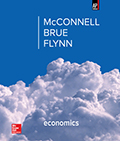
Economics (McConnell), AP* Edition, 20th EditionChapter 13W : Technology, R&D, and Efficiency*True or False |  |
 | ||||||||||||||||||||||||||||||||||||||||||
| ||||||||||||||||||||||||||||||||||||||||||



Textbook Resources
Chapter Activities



Teacher
Student
Textbook Resources
Chapter Activities
Student

  | |||||||||||||||||||||||||||||||||||||||||||||||||
Please read our Terms of Use and Privacy Notice before you explore our Web site. To report a technical problem with this Web site, please contact the Web Producer. | |||||||||||||||||||||||||||||||||||||||||||||||||


